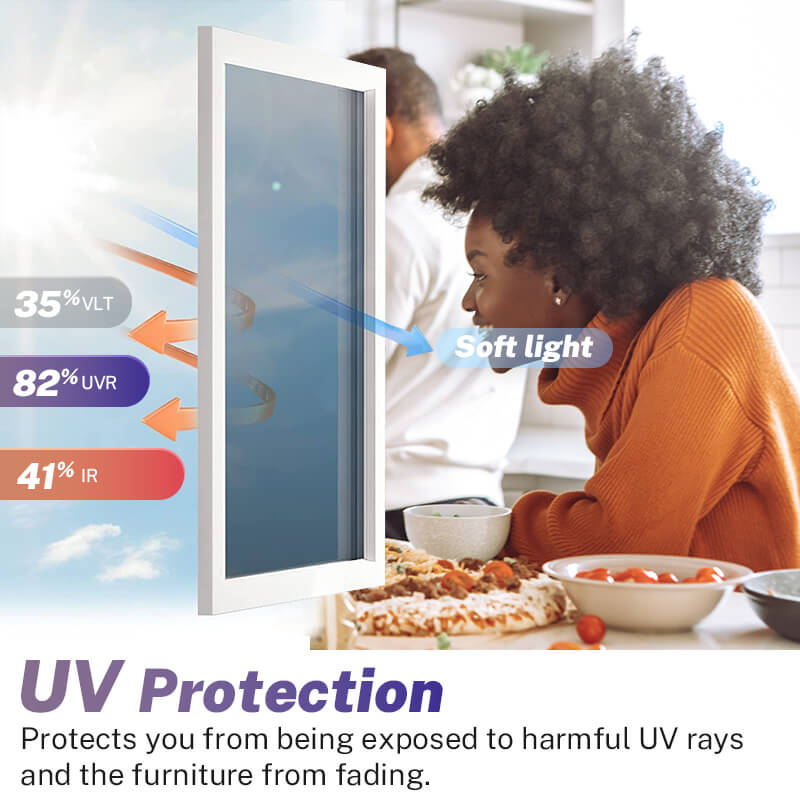In an era where safety and environmental sustainability are paramount, architectural window films have emerged as a pivotal solution for both residential window tinting and commercial window tinting applications. Beyond their traditional role in enhancing aesthetics, these films offer significant advantages in shatter resistance, impact resistance, and promoting low-carbon, energy-efficient environments. This article delves into these aspects, highlighting how architectural window films contribute to safer and more sustainable buildings.
Shatter Resistance: Protecting Occupants from Glass Hazards
Glass windows play an essential role in modern architecture, significantly enhancing interior spaces by allowing natural light and providing aesthetic appeal and visual connectivity with the outdoors. However, despite their many benefits, glass windows present inherent safety hazards due to their fragility. When subjected to impacts, whether accidental collisions, extreme weather conditions, natural disasters such as earthquakes and hurricanes, or intentional acts like vandalism and forced entry attempts, glass can shatter, dispersing dangerous fragments that pose severe risks to occupants and passersby alike.
To mitigate these risks, architectural window films are specifically engineered to reinforce glass surfaces and enhance their shatter resistance. These advanced films form a robust, transparent barrier, adhering securely to the glass and significantly reducing the likelihood of injury by containing fragmented pieces in the event of breakage. Instead of breaking apart and scattering dangerously, shattered glass remains bonded to the film, preserving the structural integrity of the window. This containment helps prevent injuries from sharp shards of glass and also aids in maintaining a protective barrier against external threats.

Impact Resistance: Strengthening Building Envelopes
Beyond shatter resistance, architectural window films significantly enhance the impact resistance of glass surfaces. These specialized films reinforce the structural integrity of windows by holding glass fragments securely in place upon impact, thus preventing complete failure and breach. As a result, the glass becomes far more resilient against forced entry attempts, such as burglaries or vandalism, providing both a physical barrier and a psychological deterrent to potential intruders. This protective advantage extends to extreme weather conditions, effectively minimizing damage caused by high winds, hail, and flying debris during storms. By maintaining window integrity under harsh conditions, architectural films substantially reduce property damage and offer occupants a greater sense of security.
Moreover, the installation of window films transforms ordinary glass panels into safety-grade glazing, effectively meeting stringent building safety codes and standards. This upgrade is especially critical in areas frequently exposed to hurricanes, tornadoes, or intense storms, where windborne debris can severely compromise building envelopes and pose significant risks to human safety. Enhanced glass resilience helps mitigate the risk of injury caused by shattered glass, protecting inhabitants from sharp, hazardous fragments. By preserving window integrity, these films contribute to maintaining internal building pressure and structural stability during severe weather events. Thus, investing in high-quality architectural window films not only safeguards occupants but also provides long-term cost savings by reducing repair and replacement expenses in the aftermath of environmental hazards.
Low Carbon and Energy Efficiency: Promoting Sustainable Living
In addition to safety enhancements, architectural window films play a vital role in promoting energy efficiency and reducing carbon footprints. By filtering solar radiation, these films reduce the amount of heat entering a building, thereby lowering the reliance on air conditioning systems. This leads to substantial energy savings and contributes to a building's overall sustainability.
For example, the application of window films has been shown to effectively reduce solar heat gain, leading to decreased energy consumption for cooling purposes. This not only results in cost savings for building owners but also aligns with global efforts to reduce greenhouse gas emissions.
A Holistic Approach to Building Safety and Sustainability
Architectural window films offer a comprehensive solution to enhance building safety and promote environmental sustainability. By improving shatter and impact resistance, they protect occupants from potential hazards associated with broken glass. Simultaneously, their ability to reduce solar heat gain contributes to energy efficiency and supports low-carbon initiatives.
As the demand for safer and more sustainable building solutions continues to grow, products like XTTF's residential window tint stand out as effective measures to achieve these goals. Their multifaceted benefits make them a valuable addition to any building, enhancing both safety and environmental performance.
Post time: Mar-06-2025





